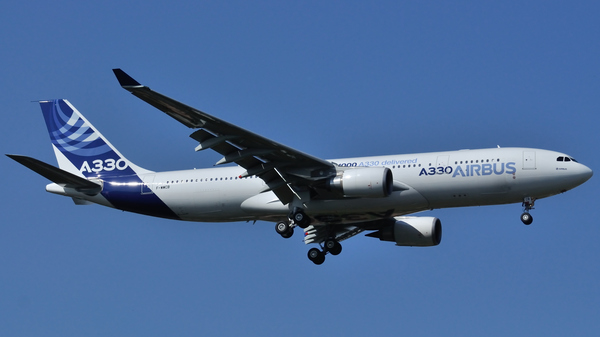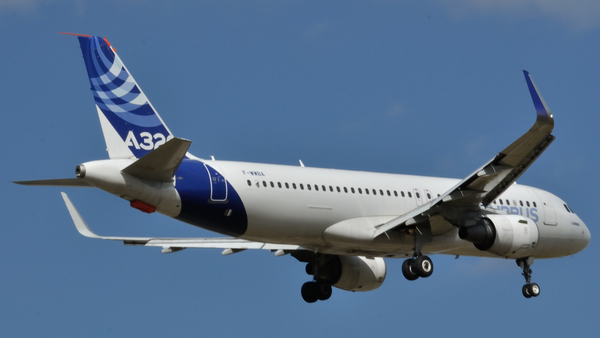CAA F50 at Beni on Aug 1st 2016, brakes problem
Last Update: April 20, 2020 / 21:52:17 GMT/Zulu time
Incident Facts
Date of incident
Aug 1, 2016
Classification
Incident
Airline
CAA Compagnie Africaine Aviation
Flight number
BU-2511
Departure
Bunia, Democratic Republic of Congo
Destination
Beni, Democratic Republic of Congo
Aircraft Registration
9Q-CBL
Aircraft Type
Fokker 50
ICAO Type Designator
F50
DR Congo's Bureau Permanent d’Enquêtes d’Accidents/Incidents d’Aviation (BPEA) reported the crew perceived a brakes problem causing the aircraft to veer left. The BPEA rated the occurrence a serious incident and opened an investiation. The DSB representing the state of manufacture joined the investigation to assist.
On Aug 15th 2017 the DSB released information in their quarterly bulletin stating the DR Congo's BPEA concluded the investigation on Jan 9th 2017.
The investigation reported that about 5nm before touchdown, when the landing gear was extended, an ANTI SKID FAULT message occurred. The crew continued the approach, set the flaps to 35 degrees in accordance with the checklist for not working anti skid systems. After touch down the first officer, pilot flying, had difficulties placing the power levers into ground idle. Due to the low deceleration the first officer therefore stepped into the pedal brakes, a few seconds both tyres at the left hand side burst. The aircraft came to a stop on the runway about 250 meters short of the runway end, the left main wheels were found tilted by 90 degrees. The occupants could disembark normally, there were no injuries.
DR Congo's BPEA released their final report in French dated Jan 9th 2017 (Editorial note: to serve the purpose of global prevention of the repeat of causes leading to an occurrence an additional timely release of all occurrence reports in the only world spanning aviation language English would be necessary, a French only release does not achieve this purpose as set by ICAO annex 13 and just forces many aviators to waste much more time and effort each in trying to understand the circumstances leading to the occurrence. Aviators operating internationally are required to read/speak English besides their local language, investigators need to be able to read/write/speak English to communicate with their counterparts all around the globe).
The final report concludes the probable causes of the incident were:
- poor application of aircraft maintenance procedures for the aircraft's electrical wires for the anti-skid sensors and sheath
- inability to select the propellers into ground idle preventing selection of reverse
- abrupt attempt to select mode "propeller ground idle stop" before or at touch down. Poor application of the procedure in the event of "propeller ground idle stop" being inop by the crew.
The BPEA analysed the flight was uneventful until final approach about 5nm before touchdown when the crew selected the gear down and received a gear down and locked indication followed by the "ANTI SKID INOP" indication. The crew reviewed the emergency procedure and decided to continue with the landing with the flaps at 35 degrees according to the ANTI SKID INOP procedure. Runway 29 had a length of 2000 meters, the first 300 meters however were unusable. At 17,000 kg landing mass Vref had been computed at 92 KIAS, the landing distance required with ANTI SKID INOP was 1680 meters. Upon touchdown or just before the first officer, pilot flying, attempted to select the propellers into ground idle stop, but failed, then advanced the lever again and tried another time, however, again without success. Seeing the remaining available runway ahead diminish with only about 250 meters remaining the first officer stepped into the brakes pedals which resulted in the left main tyres to burst and the main wheels to rotate by 90 degrees.
According to the AOM of the Fokker 50 the propeller ground idle stop will only operate when the gear struts signal weight on the wheels. The ground idle stop was probably selected prematurely.
The electrical cables for the anti skid sensor were cut because not being protected by the protective sheath (shield), following wear they came loose.
The report does not explain why the left main wheels rotated by 90 degrees.
Incident Facts
Date of incident
Aug 1, 2016
Classification
Incident
Airline
CAA Compagnie Africaine Aviation
Flight number
BU-2511
Departure
Bunia, Democratic Republic of Congo
Destination
Beni, Democratic Republic of Congo
Aircraft Registration
9Q-CBL
Aircraft Type
Fokker 50
ICAO Type Designator
F50
This article is published under license from Avherald.com. © of text by Avherald.com.
Article source
You can read 2 more free articles without a subscription.
Subscribe now and continue reading without any limits!
Read unlimited articles and receive our daily update briefing. Gain better insights into what is happening in commercial aviation safety.
Send tip
Support AeroInside by sending a small tip amount.
Related articles
CAA A332 at Goma on Mar 5th 2024, rejected takeoff due to bird strike
A CAA Compagnie Africaine Aviation Airbus A330-200, registration 9S-ASJ performing flight BU-1222 from Goma to Kinshasa N'djili (DR Congo), was…
CAA A320 at Goma on Mar 5th 2024, hydraulic failure
A CAA Compagnie Africaine Aviation Airbus A320-200, registration 9S-ABI performing flight BU-633 from Kalemie to Goma (DR Congo), was on approach to…
CAA A333 at Lubumbashi on Aug 16th 2023, engine shut down in flight
A CAA Compagnie Africaine Aviation Airbus A330-300, registration 9S-ABS performing flight BU-1612 from Lubumbashi to Kinshasa (DR Congo), was…
CAA AT72 at Bunia on Oct 11th 2023, runway excursion on landing
A CAA Compagnie Africaine Aviation Avions de Transport Regional ATR-72-212A, registration 9S-ACE performing flight BU-1844 from Isiro to Bunia (DR…
CAA A320 at Mbuji Mayi on Jan 29th 2023, dropped part of elevator on departure
A CAA Compagnie Africaine Aviation Airbus A320-200, registration 9S-ABM performing flight BU-415 from Mbuji Mayi to Kinshasa N'Djili (DR Congo),…
Newest articles
ABX B762 at Milwaukee on Apr 17th 2024, bird strike
An ABX Air Boeing 767-200 freighter, registration N650GT performing flight GB-2042 from Cincinnati,KY to Milwaukee,WI (USA) with 2 crew, landed on…
Cem DH8D at Johannesburg on Apr 18th 2024, engine failure
A Cemair de Havilland Dash 8-400, registration ZS-DHA performing flight 5Z-518 from Johannesburg to Kimberly (South Africa), was climbing out of…
Subscribe today
Are you researching aviation incidents? Get access to AeroInside Insights, unlimited read access and receive the daily newsletter.
Pick your plan and subscribePartner

A new way to document and demonstrate airworthiness compliance and aircraft value. Find out more.

ELITE Simulation Solutions is a leading global provider of Flight Simulation Training Devices, IFR training software as well as flight controls and related services. Find out more.

Your regulation partner, specialists in aviation safety and compliance; providing training, auditing, and consultancy services. Find out more.
AeroInside Blog
Popular aircraft
Airbus A320Boeing 737-800
Boeing 737-800 MAX
Popular airlines
American AirlinesUnited
Delta
Air Canada
Lufthansa
British Airways


